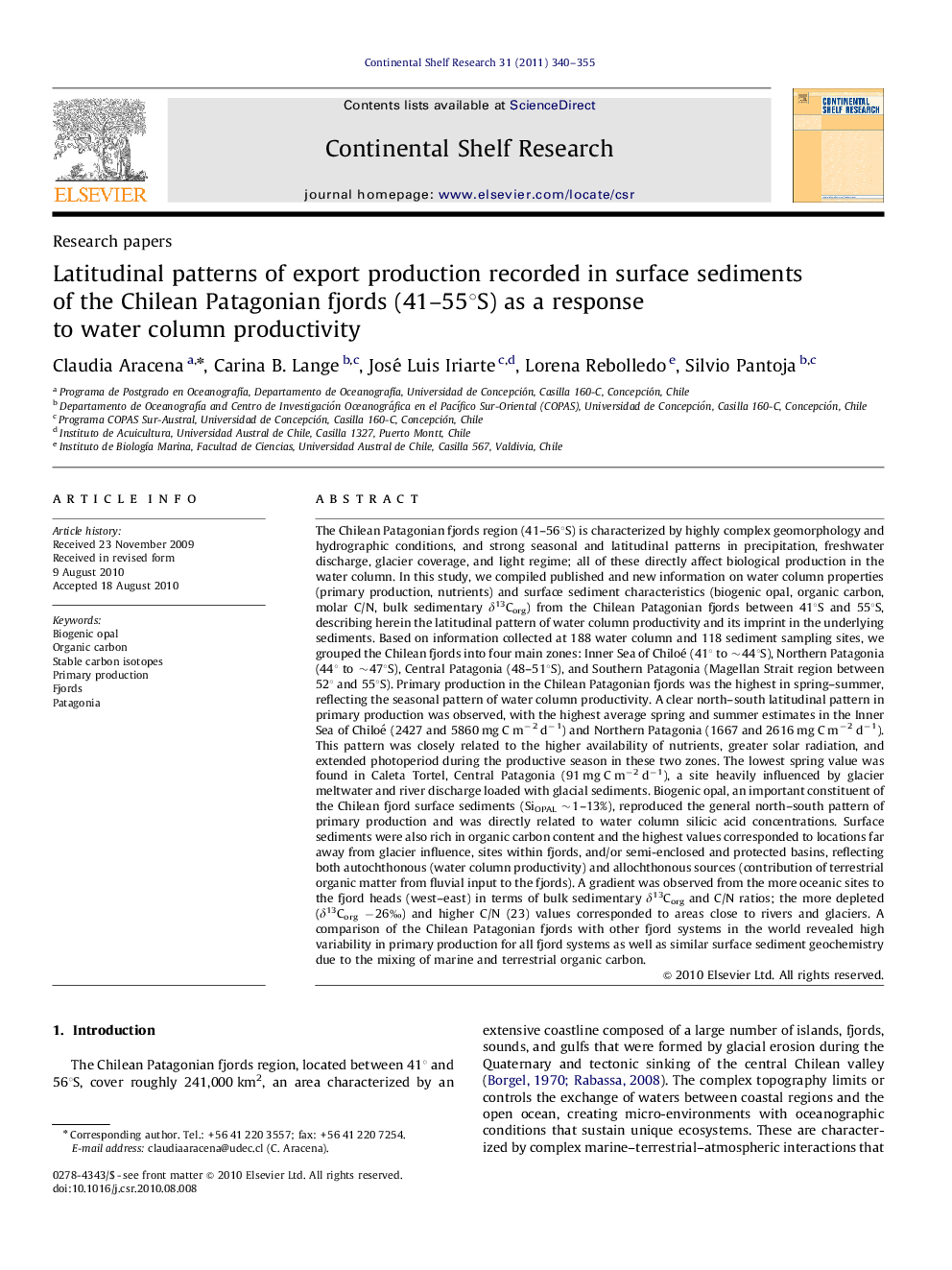| کد مقاله | کد نشریه | سال انتشار | مقاله انگلیسی | نسخه تمام متن |
|---|---|---|---|---|
| 4532711 | 1626180 | 2011 | 16 صفحه PDF | دانلود رایگان |

The Chilean Patagonian fjords region (41–56°S) is characterized by highly complex geomorphology and hydrographic conditions, and strong seasonal and latitudinal patterns in precipitation, freshwater discharge, glacier coverage, and light regime; all of these directly affect biological production in the water column. In this study, we compiled published and new information on water column properties (primary production, nutrients) and surface sediment characteristics (biogenic opal, organic carbon, molar C/N, bulk sedimentary δ13Corg) from the Chilean Patagonian fjords between 41°S and 55°S, describing herein the latitudinal pattern of water column productivity and its imprint in the underlying sediments. Based on information collected at 188 water column and 118 sediment sampling sites, we grouped the Chilean fjords into four main zones: Inner Sea of Chiloé (41° to ∼44°S), Northern Patagonia (44° to ∼47°S), Central Patagonia (48–51°S), and Southern Patagonia (Magellan Strait region between 52° and 55°S). Primary production in the Chilean Patagonian fjords was the highest in spring–summer, reflecting the seasonal pattern of water column productivity. A clear north–south latitudinal pattern in primary production was observed, with the highest average spring and summer estimates in the Inner Sea of Chiloé (2427 and 5860 mg C m−2 d−1) and Northern Patagonia (1667 and 2616 mg C m−2 d−1). This pattern was closely related to the higher availability of nutrients, greater solar radiation, and extended photoperiod during the productive season in these two zones. The lowest spring value was found in Caleta Tortel, Central Patagonia (91 mg C m−2 d−1), a site heavily influenced by glacier meltwater and river discharge loaded with glacial sediments. Biogenic opal, an important constituent of the Chilean fjord surface sediments (SiOPAL ∼1–13%), reproduced the general north–south pattern of primary production and was directly related to water column silicic acid concentrations. Surface sediments were also rich in organic carbon content and the highest values corresponded to locations far away from glacier influence, sites within fjords, and/or semi-enclosed and protected basins, reflecting both autochthonous (water column productivity) and allochthonous sources (contribution of terrestrial organic matter from fluvial input to the fjords). A gradient was observed from the more oceanic sites to the fjord heads (west–east) in terms of bulk sedimentary δ13Corg and C/N ratios; the more depleted (δ13Corg −26‰) and higher C/N (23) values corresponded to areas close to rivers and glaciers. A comparison of the Chilean Patagonian fjords with other fjord systems in the world revealed high variability in primary production for all fjord systems as well as similar surface sediment geochemistry due to the mixing of marine and terrestrial organic carbon.
Journal: Continental Shelf Research - Volume 31, Issues 3–4, 1 March 2011, Pages 340–355